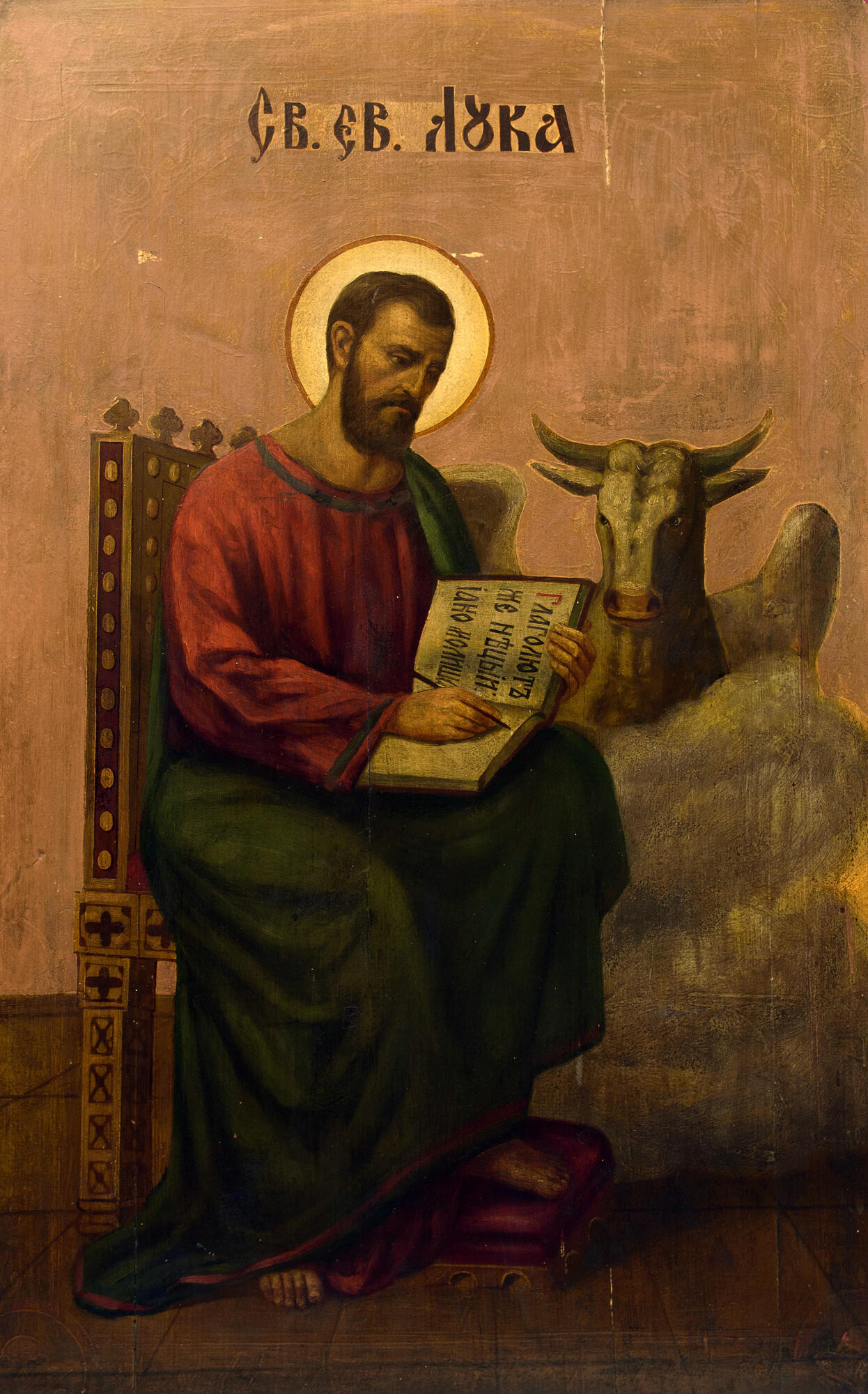Luke the Apostle was born in Antioch of Syria and was an associate of St. Paul the Apostle. There is evidence that Luke was also a physician. When Luke learned about Jesus Christ he came to Palestine personally and was deeply impressed by his new teaching. Among the 70 disciples St. Luke was sent to preach the first sermon on the Kingdom of Heaven while Jesus was still alive. According to the Gospel text, after His resurrection Christ appeared exactly to Luke and His other disciple Cleopas on their way to Emmaus. Luke the Apostle took part in Apostle Paul’s second missionary journey and from then on, they were bound together by close ties of friendship.
The Gospel was compiled by Luke the Apostle around 62–63 in Rome with the direct participation of Paul the Apostle. St. Luke made an attempt to give the most complete and chronological account of what Christians knew about Jesus Christ and his teachings, thus providing a historical reasoning for Christian doctrine. According to some scholars, Apostle Luke’s Gospel includes the stories told by the Virgin Mary herself. In his Gospel he emphasizes the sacrificial suffering of Jesus Christ, so the symbol of Luke the Apostle is the sacrificial calf depicted in this icon.
The symbolic association of the apostles with images of living creatures is borrowed from the vision of Prophet Ezekiel (6th century BC), who described a winged creature with four faces — a man, a lion, an ox (calf) and an eagle. In the Book of Revelation of John the Evangelist this tetramorph is represented in the form of four separate apocalyptic creatures — the guardians of the four corners of the Throne of God and the four corners of Paradise. The calf also symbolizes the hierurgical and priestly dignity of Christ.
Luke preached the Gospel in Italy and Macedonia. He created three icons of the Blessed Virgin Mary and the Holy Apostles Peter and Paul and is considered to be the founder of Christian iconography. In his old age he continued to travel and preach in Libya, Upper Egypt and Greece. He was executed in Thebes by hanging on an olive tree. Therefore, an icon of Luke the Evangelist can sometimes include elements of this subject or signs of martyrdom. This icon was in the church in the name of the icon of the Mother of God “Joy of All Who Sorrow” in Michurinsk from the 1940s until the early 21st century.
The Gospel was compiled by Luke the Apostle around 62–63 in Rome with the direct participation of Paul the Apostle. St. Luke made an attempt to give the most complete and chronological account of what Christians knew about Jesus Christ and his teachings, thus providing a historical reasoning for Christian doctrine. According to some scholars, Apostle Luke’s Gospel includes the stories told by the Virgin Mary herself. In his Gospel he emphasizes the sacrificial suffering of Jesus Christ, so the symbol of Luke the Apostle is the sacrificial calf depicted in this icon.
The symbolic association of the apostles with images of living creatures is borrowed from the vision of Prophet Ezekiel (6th century BC), who described a winged creature with four faces — a man, a lion, an ox (calf) and an eagle. In the Book of Revelation of John the Evangelist this tetramorph is represented in the form of four separate apocalyptic creatures — the guardians of the four corners of the Throne of God and the four corners of Paradise. The calf also symbolizes the hierurgical and priestly dignity of Christ.
Luke preached the Gospel in Italy and Macedonia. He created three icons of the Blessed Virgin Mary and the Holy Apostles Peter and Paul and is considered to be the founder of Christian iconography. In his old age he continued to travel and preach in Libya, Upper Egypt and Greece. He was executed in Thebes by hanging on an olive tree. Therefore, an icon of Luke the Evangelist can sometimes include elements of this subject or signs of martyrdom. This icon was in the church in the name of the icon of the Mother of God “Joy of All Who Sorrow” in Michurinsk from the 1940s until the early 21st century.


